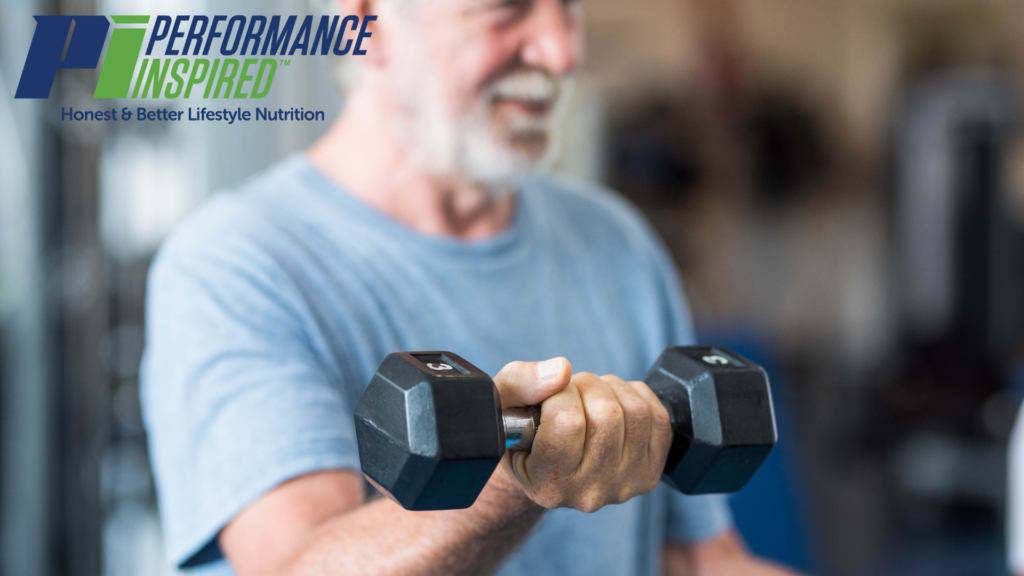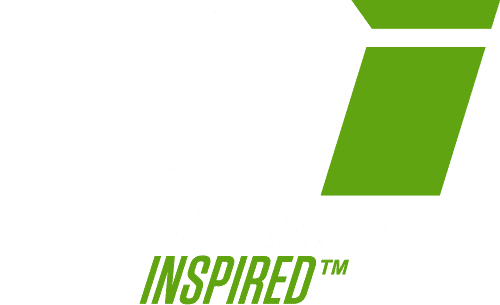Exercise After 40

Let’s admit it: It was a lot easier to exercise when we were younger. We had stamina, time, energy, and motivation. As we age, many of us begin to lose those things. And then one day, we look in the mirror and barely recognize ourselves. We know we have to make a change. We know that there are many reasons to get in shape. But implementing an exercise plan after 40 can be extremely difficult.
Performance Inspired wants to help. So not only have we compiled a list of great ways to get in shape, but we have some awesome products to help you on this journey.
Why should we get in shape?
We know we should exercise to lose weight and to improve or maintain our health. But what does exercise actually do for us?
Exercise helps improve all aspects of health—from reducing the risk of heart disease to lowering cholesterol to toning our bodies to giving us some much-needed energy and more.
According to Healthline, “Increasing physical activity later in life results in the same risk reduction of cancer, cardiovascular disease, and all-cause mortality as being active from adolescence through adulthood.”
So if you’re over 40 and just starting to get in shape, here are some tips to make sure you begin safely and don’t hurt yourself. As with any lifestyle change, talk with your doctor about the changes you plan to make or any supplements you want to take. But then follow these tips to get in shape.
- Start with a positive mindset.
This is vital. When you begin an exercise routine, implement a program you can get excited about. You don’t want to wake up every day dreading what you plan to do. Choose activities that you enjoy. If you like the outdoors, plan a jog or a brisk walk. If you like being around people, join a gym. The point is to give yourself every opportunity to succeed.
- Be realistic about goals.
Do you want to lose weight? How much? Do you want to tone your body? Do you want to improve your overall health? Do you want to reduce blood pressure and cholesterol? Exercise helps with all of these things. But what exercise won’t do is help you lose 20 pounds in a week. Setting realistic goals will keep you from becoming discouraged and giving up.
- Begin slowly!
Go slowly so you don’t hurt yourself. Healthline advises to begin with “a slow starting routine that includes aerobic exercise, like biking or a treadmill, and sensible weight training that builds up to a 30- to 40-minute workout, five times a week.” If you have been inactive for quite some time, don’t attempt to run 5 miles on a treadmill your first day. Start slowly and build up.
- Stretch
We all know the importance of stretching, but this is a step many often skip. But now more than ever it’s imperative to begin and end a workout with just a handful of minutes of stretching. You’ll reduce injuries to your muscles, and you’ll help your body recover.
- Don’t discount exercises at home
You don’t to have to join a gym to get in shape. You don’t even have to have exercise equipment. If you’re just starting out, some easy-to-do exercises at home include squats, planks, jumping rope, riding a bike, and walking or jogging around your neighborhood.
- Involve family or friends
If you’re finding it difficult to get into a routine, ask a friend to join you. Do you have a significant other or a neighbor who likes to walk? Go on a nightly walk together. Take your child on a bike ride. If you prefer to be alone when you exercise but still feel that you need motivation, explain to a friend or family member that you need some accountability. Begin conversations about healthy living. The more you talk about it, the more likely you will be to continue.
- Persevere
It’s not easy to begin a new habit, especially an exercise habit. So even if you start off well, realize that there will be days when you don’t feel like doing anything. It’s okay to take a day off. But even on your days off, you could get a little exercise by doing extra squats, taking the stairs instead of the elevator, or doing a few jumping jacks. The point is to not let one or two bad days ruin a new routine. If you falter, pick yourself up and continue on.
How much and what kind of exercise do I need?
Healthline advises: “Optimal risk reduction for both younger and older participants was seen when engaging in a weekly total of 150 minutes of moderate activity, such as gardening or housework, or 75 minutes of vigorous activity, such as fast-paced walking, running, swimming, or aerobics.”
It then advises the following after you have eased into your routine:
- Moderate aerobic activity for 30 minutes daily (100 steps per minute)
- Muscle strengthening with all major muscle groups three days a week
- Balance exercises two days a week at minimum
Prevention magazine stresses the necessity of cardio workouts for heart health, and to benefit from a cardio workout it instructs people to exercise at 80% of their maximum heart rate three to four times per work for 30 minutes. To find your maximum heart rate, simply subtract your age from 220. For example, if you are 40, your maximum heart rate would be 180. If you want to figure out 80% of that, multiply .8 by 180. That would be 144. Aim for activity that will get your heart to that rate.
Women over 50 know the threat of osteoporosis—a weakening of the bones that often leads to easily broken bones. To keep bones strong, perform exercises that are high impact and weight bearing. This can include activities such as dancing, playing racquet sports like Pickleball, jogging, or even doing jumping jacks or jumping rope.
To help strengthen your core, which in turn can help decrease back pain, try planking. Time yourself and then build up a little each day.
Finally, according to Newsweek, if you want to lose weight after 40, you should include strength training as part of your regimen. So even if you don’t belong to a gym, you can buy some hand weights or even some bands to work out with.
Performance Inspired products
At PI, we know that taking care of your body and nourishing it with quality products is important to you. It’s important to us too! Several of our products not only help with giving you energy but help you recover after your workout and help protect your joints.
Performance Diet & Energy is a supplement that provides all-day metabolic support to help you energize your day and minimize your hunger. It’s created with green coffee bean extract, garcinia cambogia, citrulline, and green tea leaf extract to help you turbocharge your day.
Diet & Energy Ripped Whey Protein is a protein powder with a special Thermogenic Diet & Energy Complex that also includes L-carnitine, leucine, choline bitartrate, caffeine from natural green tea, and digestive enzymes, so you won’t feel bloated.
Post-Workout BCAA is a vegan-friendly powder to help you recover faster and that supports solid, lean muscle growth. BCAAs—or branched-chain amino acids—are key aminos to fueling muscles after any workout. For more information about the benefits of BCAAs, read our blog!
Finally, to help support your joints, we have a Collagen powder, Beauty Support Collagen capsules, and Joint Support Plus capsules.
Any of these products would be great additions to your new workout routine!
Exercise after 40 can be both fun and beneficial, though it’s not always easy. But when you have the determination to make a change and the understanding of the vital impact it will have on your health, you will feel much more inspired to continue. So, make a plan, set some goals, and watch the transformation!
#performanceinspired #inspiredtobebetter #markwahlberg #blogpost #healthblog #fitnessblog #blogger #exercise #fitover40 #fitover50 #fitness #fitnessmotivation #healthgoals #fitnessgoals



